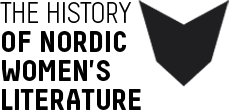The Danish author Jette Drewsen’s work from the 1970s has become a symbol of the upheaval in literature, politics, and private life which the new women’s movement sparked. Her novels are about, and speak to, the newly conscious middle-class woman; they gave rise to discussions about the new form of women’s literature and its message – and over time they became reflections on a female aesthetic which is under constant change.Whereas Jette Drewsen’s women throughout her 70s novels find a survival strategy, Anne Marie Ejrnæs begins her writing career with two novels about women whose lives fall apart due to the gap between ideals and social reality. The crisis is a central, and by now not wholly negative, concept in her oeuvre, which in latter years displays a particular interest in history.
Articles
The Danish author Vita Andersen’s prose poetry was nicknamed knækprosa (broken prose) because the poems were apparently nothing more than narratives made up of lines of uneven length. However, her narrative and characterising poetry is more complex than it initially appears. It is in itself a staging of everyday language, an exhibition of the force, the roles, and the confinement in the lives and speech of the characters, but by no means an artless repetition. The gender roles as a guarantee against a happy interaction between the genders is a central theme in her texts.Charlotte Strandgaard made her debut in 1965, and throughout the 1960s and 70s she wrote a number of collections of poetry and documents that focused on typical problems such as alcoholism, drug addiction, social outcasts, and losers. Her universe is ruled by suffering, misunderstandings between those who want to love each other, guilt, and hopelessness. The tone (and the position) is compassionate, and there is a willingness to find an explanation and a solution. Her adults, like those of Vita Andersen, are wounded children; however, in Charlotte Strandgaard’s world there is a steady insistence on reconciliation and redemption alongside the pain.
Cecilie Løveid’s first three lyrical prose novels make a radical break from the social realist novel dominant in Norway in the 1970s. Løveid insists on her modernist aesthetics, in which fragments, collage, intertextuality, and polyphony are preferred to the codes of realism. Her fundamental affinity is with poetry, and because she remains a modernist poet no matter what genre she approaches, it becomes impossible for her to submit to a social realist idiom.The same is true of Kari Bøge, whose experimental debut work Asmorelda, from 1971, makes a radical break from the realistic narrative tradition and represents one of the first significant attempts at a new female modernist prose in Norway. Her insistence on an ahistorical individualism and an aesthetics of emptiness marks a departure from other women writers of the period around 1970. However, she also embarks on themes that were and are central to feminist-oriented writing: the question of identity, the relationship to the husband, and the relationship to writing.
Existential Poetry
On the New Language-Conscious Literature of the 60s and 70s
The Cultural Duality of Emigrant Literature
Throughout her long and popular writing career, Martha Christensen built on social realism and a critical involvement in how society treats the weak. In her stories, the social system itself becomes a powerful character that prevails over individual will.Martha Christensen’s critical socio-psychology is not directly political in the same way as Dea Trier Mørch’s stories about the relationship between the individual and society. In her work, the system becomes the necessary organisation and the holistic entity that forms cohesion in individuals’ lives and takes care of them. However, her attitudes and her entire body of work are a critical depiction of the modern welfare society and its view of humanity.Her texts remain within the social structure she criticises, whereas the critic of modernism Anne Marie Løn, following her urban novel Veras vrede (1982; Vera’s Anger), journeys through time, the country, and other types of social life in her search for a positive counterpart to the destructive city.
The Welfare Society Viewed from Below
Social criticism and new consciousness in Norwegian women’s literature of the 1970s.
Based on the new research in women’s studies being conducted at Danish universities in the 1970s, a league of female reviewers arose who wrote about new – and old – women’s literature. They functioned as the propagators of reader experiences as well as the new norm-setters with regard to interpreting women’s literature.The notion of the importance of the woman’s experience, in particular, became an artistic driving force. It led to the creation both of the confessional genre, in which the subjective experience served as a way for the writer and the reader to conquer identity and ‘I’-power, as well as of emancipation literature, in which experience paradigmatically leads to awareness, resistance, and liberation, from marriage or from mental self-oppression.

